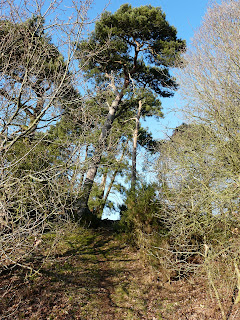Rampart Field, near West Stow, Suffolk.....
"A site of pioneering Victorian investigation Rampart Field is an area of heathland and scrub woodland including Town Pit, a disused gravel pit last worked in the 1950s. It has a special place in the history of science, as one of the first sites ever investigated for evidence for Palaeolithic human settlement in Britain. It is now part of the West Stow Heath Site of Special Scientific Interest (SSSI) designated for its wildlife value. Pioneering researchers Joseph Prestwich (geologist) and John Evans (archaeologist) visited here in 1860, looking for evidence that flint implements were definitely associated with extinct ‘antediluvian’ animals. A year earlier Darwin had published his ‘Origin of Species’, and the finds at Rampart Field would help demonstrate the great antiquity of human kind. Several artefacts were found, although mammal fossils proved frustratingly scarce, just elephant bones and a reindeer antler.
Researchers re-investigated Rampart Field in 1993, trying to discover more about the geological history of the Lark valley. They found chalk rubble underlying gravelly deposits containing a flint scraper tool. The gravels may have been deposited by meltwaters from an ice sheet occupying Fenland about 160,000 years ago. They contain a distinctive assemblage of quartz-rich pebbles that were brought to the area by a powerful but now-vanished river about ½ million years ago. Known as the Bytham River, it eroded and transported quartz and quartzite pebbles from 200 million year-old Permo-Triassic rocks in the Midlands.
A brown quartzite boulder at the northern end of the site (see map) is likely to be a glacial ‘erratic’, transported to the area by the Anglian ice sheet about 450,000 years ago. It is probably a form of silcrete (silica cemented sandstone) outcropping in the Kings Lynn area."
Source:- http://www.breakingnewground.org.uk/earthheritagetrail/rampart-field/

up in the foothills of Icklingham.......
Pixie examining the brown quartzite boulder to establish whether she thinks it is likely to be a glacial ‘erratic’, transported to the area by the Anglian ice sheet about 450,000 years ago.....


















0 Comments:
Post a Comment
<< Home